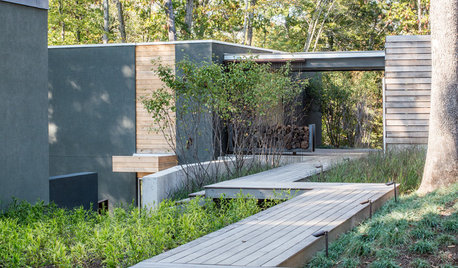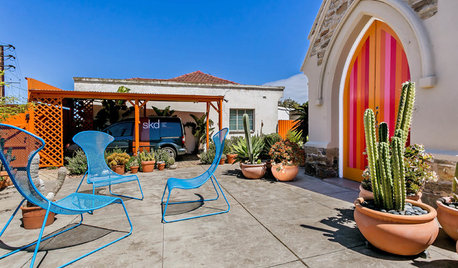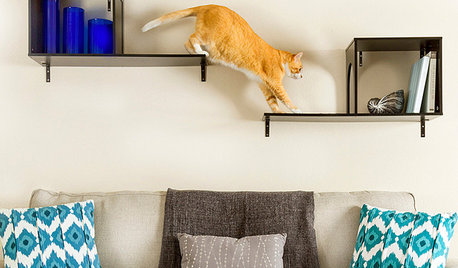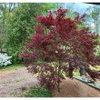Creating a new mulch bed
cjdoyle
13 years ago
Related Stories

GARDENING GUIDESNew Ways to Think About All That Mulch in the Garden
Before you go making a mountain out of a mulch hill, learn the facts about what your plants and soil really want
Full Story
GARDENING GUIDESHow to Pick a Mulch — and Why Your Soil Wants It
There's more to topdressing than shredded wood. Learn about mulch types, costs and design considerations here
Full Story
GARDENING GUIDESThe Art of Green Mulch
You can design a natural garden that doesn’t rely on covering your soil with wood and bark mulch
Full Story
LANDSCAPE DESIGNDitch the Ordinary Ditch: Create a Realistic Dry Creek Bed
Here’s how to turn your water runoff system into an eye-catching accent for your landscape
Full Story
PATHSCreate Garden Mystery With a Zigzag Path
Foster intrigue by setting garden paths at angles ‘yatsuhashi’-style
Full Story
INSIDE HOUZZUsing Houzz: Create a Home To-Do List
See how to use an ideabook to keep track of your home projects this year
Full Story
CURB APPEAL15 Ways to Create a Welcoming Front Yard
These homes featured on Houzz offer a neighborly view to the street
Full Story
SHOP HOUZZShop Houzz: Create a Kids’ Bedroom Paradise
Encourage imagination and big dreams with a special bed, artwork and accessories
Full Story0

SHOP HOUZZShop Houzz: Create Your Own 5-Star-Worthy Guest Room
Offer guests more than just sleeping quarters with stylish bedding, furniture and accessories
Full Story
SHOP HOUZZHouzz Products: Create a Cat Heaven at Home
Show kitty you care and keep your style too with fun and cozy cat beds, perches, trees and decor
Full Story









missingtheobvious
cjdoyleOriginal Author
Related Professionals
Foothill Ranch Landscape Architects & Landscape Designers · Saint Matthews Landscape Architects & Landscape Designers · South Elgin Landscape Architects & Landscape Designers · Maple Heights Landscape Architects & Landscape Designers · Washington Landscape Architects & Landscape Designers · Columbine Landscape Contractors · Palos Verdes Estates Landscape Contractors · Sammamish Landscape Contractors · Santa Maria Landscape Contractors · Thonotosassa Landscape Contractors · 07920 Landscape Contractors · Forest Hill Landscape Contractors · Boone Decks, Patios & Outdoor Enclosures · Hobart Decks, Patios & Outdoor Enclosures · Midwest City Decks, Patios & Outdoor Enclosuresmissingtheobvious
cjdoyleOriginal Author
sarcare
woodyoak zone 5 southern Ont., Canada
missingtheobvious
cjdoyleOriginal Author
woodyoak zone 5 southern Ont., Canada
inkognito
cjdoyleOriginal Author
lazy_gardens